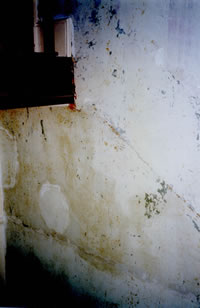H is for Hart
09/04/14 09:52
Mary Ann Ashworth, Mrs Charles Patrick (of ‘F is for...’ fame) died in 1883 without direct descendants. She left her properties in Springhill and elsewhere between her two nieces, Elizabeth Ann Turner and Mary Alice Royds. It may have been her intention to leave all the Springhill properties to Elizabeth Ann Turner but the terms of her will were unclear and the ownership of Rose Cottage was still in dispute 15 years after Mrs Patrick’s death. As married women the land was held in Trust and the legal owners a succession of trustees.
After Mrs Turner’s death in 1921 she willed that the properties be sold and the monies distributed. This was done, with the purchaser being one John Hart, described in conveyances as ‘Secretary to a Limited Company’. Hart was already the occupier of Polefield Cottage and continued to live there. Soon after 1923 he began to sell the other properties and so break up the estate. Springhill House and its outbuildings were sold to EL Compston (‘C is for...’) at this time and he began converting them into dwellings. Hart retained Polefield Cottage for himself and three cottages near to Polefield. He died in 1947 and willed that his properties be converted to money; his wife (and executor) did not do this.
Hart’s purchase of the estate marks the start of a period of rapid changes in ownership and development which left its marks on the area. At least three small outbuildings (including the former billiard hall) were converted into houses: the Bungalow, the Cot and the Cottage. Springhill House was further subdivided, with bricked-up doorways and the remnants of staircases evident. These give tantalising glimpses into how the houses may have been arranged previously. Its a reminder what you see now isn’t always the way it was, even if the external structure looks unchanged.

After Mrs Turner’s death in 1921 she willed that the properties be sold and the monies distributed. This was done, with the purchaser being one John Hart, described in conveyances as ‘Secretary to a Limited Company’. Hart was already the occupier of Polefield Cottage and continued to live there. Soon after 1923 he began to sell the other properties and so break up the estate. Springhill House and its outbuildings were sold to EL Compston (‘C is for...’) at this time and he began converting them into dwellings. Hart retained Polefield Cottage for himself and three cottages near to Polefield. He died in 1947 and willed that his properties be converted to money; his wife (and executor) did not do this.
Hart’s purchase of the estate marks the start of a period of rapid changes in ownership and development which left its marks on the area. At least three small outbuildings (including the former billiard hall) were converted into houses: the Bungalow, the Cot and the Cottage. Springhill House was further subdivided, with bricked-up doorways and the remnants of staircases evident. These give tantalising glimpses into how the houses may have been arranged previously. Its a reminder what you see now isn’t always the way it was, even if the external structure looks unchanged.





